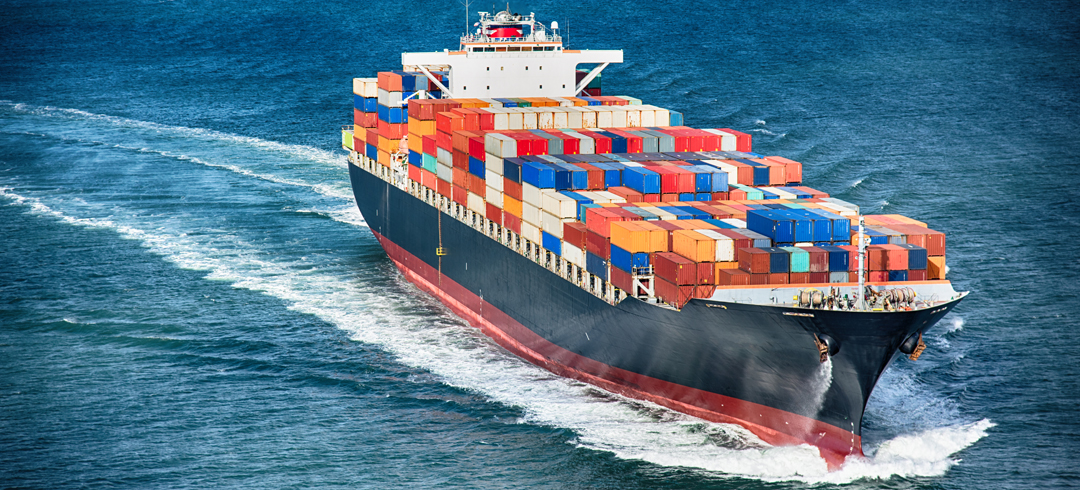People have been transporting goods by boat for thousands of years. In that time, much has changed about ocean freight shipping, from the types of vessels used, to the time it takes to cross various bodies of water.
However, there are also many aspects that haven’t changed about this method of moving assets from one port to another. For one thing, the world’s oceans and seas are vast, uncrowded paths for transporting goods and materials that many businesses rely on. Another constant with ocean freight shipping is that the waterways are a harsh environment that can wreak havoc on assets that aren’t properly protected.
How can you and your shipping company help ensure that your goods get to their destination port in as-shipped condition? We provide some insights below.
Humid, Salty Air: An Enemy of Sensitive or Rust-Prone Items, But One That Can Be Defeated
Few places on the planet are as humid as the open seas. Add to that the corrosive power of salt, and you have the recipe for serious damage to valuable assets. Metal items and sensitive electronics are particularly vulnerable.
Fortunately, there are steps you can take to keep humid, salty air away from your oceangoing goods. Vapor-barrier bags prevent moisture from getting to items during ocean transport. This type of bag is placed around items and sealed, and then the air within them is removed with a specialized vacuum system.
Often what’s called an activated desiccant is also placed inside the bag before it is sealed. Desiccants are materials that absorb moisture. You may be familiar with the small packets inside shoe boxes or packages containing other items that can be damaged by moisture.
Proper packaging of ocean freight also typically includes humidity indicator cards. Placed inside the bag, these cards can be viewed when the shipped item arrives at its destination to determine how much humidity it was exposed to. When real-time monitoring is required throughout the trip, humidity indicator plugs that project through the vapor-barrier bag can be used. That way the humidity level of the air closest to the item can be checked at any time.

Keeping Assets Stationary During Ocean Transport
Another challenge associated with ocean freight shipping is keeping items from being damaged in rough seas. Goods transported by truck, train or plane may be jostled a bit as a result of rough roads or tracks, or turbulent air, but it tends to be a minimal amount of movement.
The ocean, of course, is a whole different animal! While ocean freight companies do their best to steer clear of the roughest water, in some instances there is simply no escaping large waves that can toss a massive cargo ship around as if it is a toy boat.
Consequently, how a piece of equipment, for example, is packaged and crated takes on extra importance with ocean freight shipping. That includes how the item is blocked and braced within a crate or other container. Simply filling the remaining space in a container with cushioning material often isn’t enough to prevent damage if a cargo ship encounters particularly rough water. The skills and expertise of a packaging engineer are crucial if you are shipping goods by boat.
International Shipping and Wood Crates
For companies unfamiliar with ocean freight shipping to international ports, the biggest “threat” to a shipment can occur after it has arrived at its destination. Most foreign countries have strict requirements regarding the use of wooden crates. This is because wooden crates can harbor pests that could, in theory, start an infestation in the destination country.
What’s called the International Standards for Phytosanitary Measure No. 15 (or ISPM 15 for short) requires that all wood used in crate construction be treated to kill pests and certified as such. The so-called “bug stamp” is a mark on a wooden crate indicating that the shipper has complied with ISPM 15 regulations.
The “threat” referred to above is that customs officials in the destination country have the power to detain shipments if their ISPM 15 status is unclear, or even destroy them in some instances. Consequently, you should not send shipments overseas in wood crates without understanding and complying with all phytosanitary requirements.

Expert Logistics: Vital to the Safe Arrival of Your Ocean Freight Shipments
Protecting your assets from the rigors of ocean shipping and the actions of customs officials is very important. So is knowing where your shipments are at all times. Because ocean shipping takes longer than other forms of transportation, it’s easy to be lulled into a sense that everything is proceeding as planned.
Typically, it is, of course. But still, it’s important to work with a specialty crating, packing and shipping company like Craters & Freighters that has extensive experience in tracking the location of shipments and helping to ensure that their journey goes smoothly.
Not only do we leverage the most advanced technology to “keep tabs” on every shipment we coordinate, but we also have a huge, worldwide network of contacts that can serve as our eyes and ears should something go wrong with any particular system. Plus, by staying in touch with our overseas contacts, we frequently get advance notice of issues that may impact trade routes. That allows us to be proactive in working with transportation providers to develop alternative plans.
Avoid Maritime Misadventures With the Help of Ocean Freight Shipping Experts
Like making a u-turn in a fully loaded barge, correcting issues that occur on an ocean voyage can require tremendous resources and a great deal of time. A much better approach is to avoid issues altogether by working with a company like Craters & Freighters that has a deep understanding of the challenges companies face when utilizing ocean transport and the optimal solutions for those challenges.
A newly formed shipping company, or one that rarely handles engagements that involve ocean freight, may tell you they are confident about their ability to shepherd your shipment successfully, but confidence is no match for experience.

